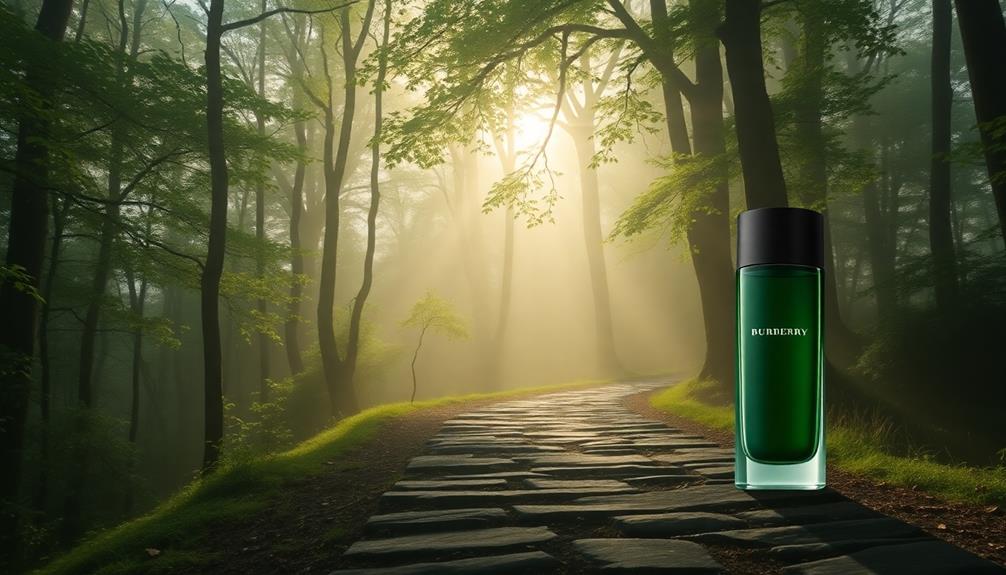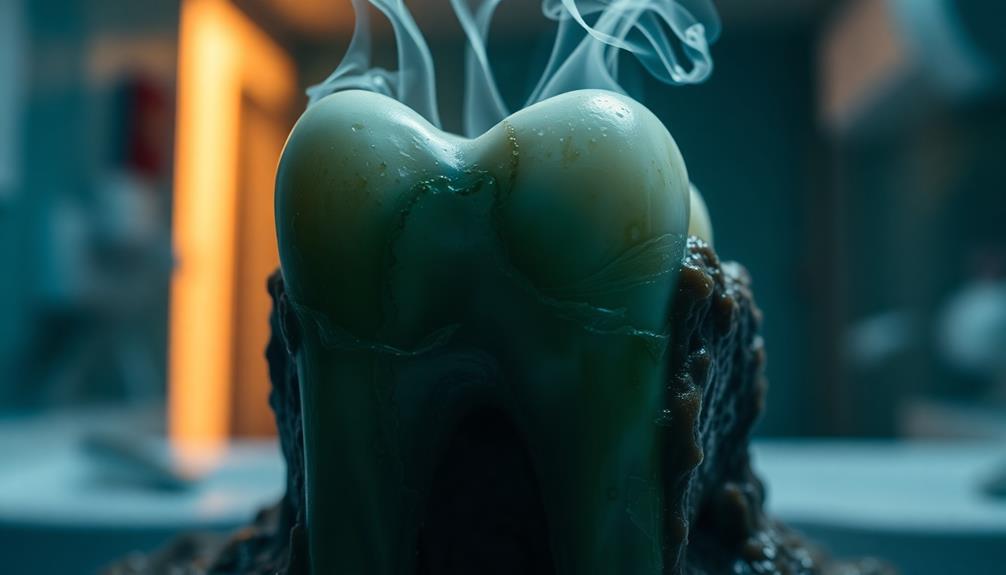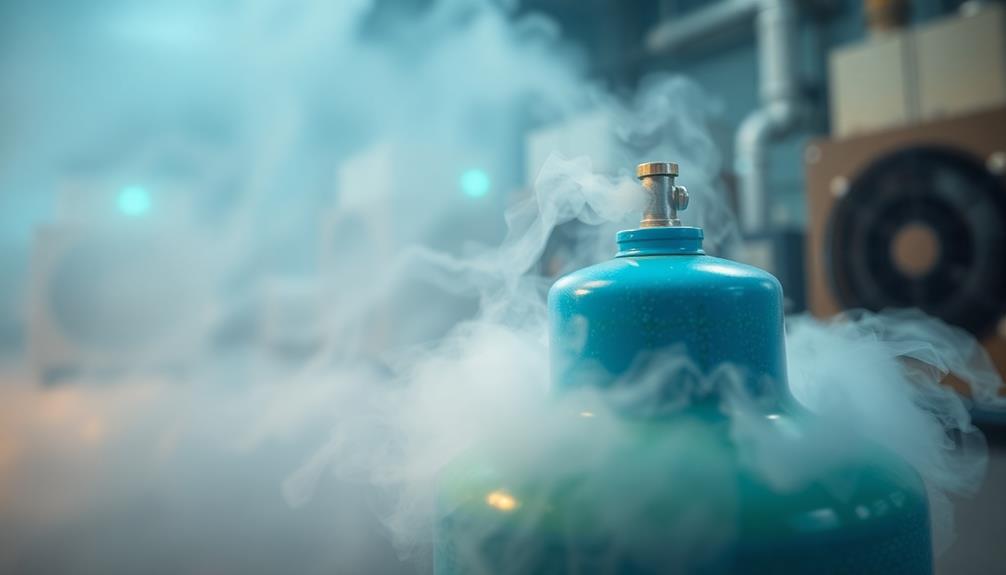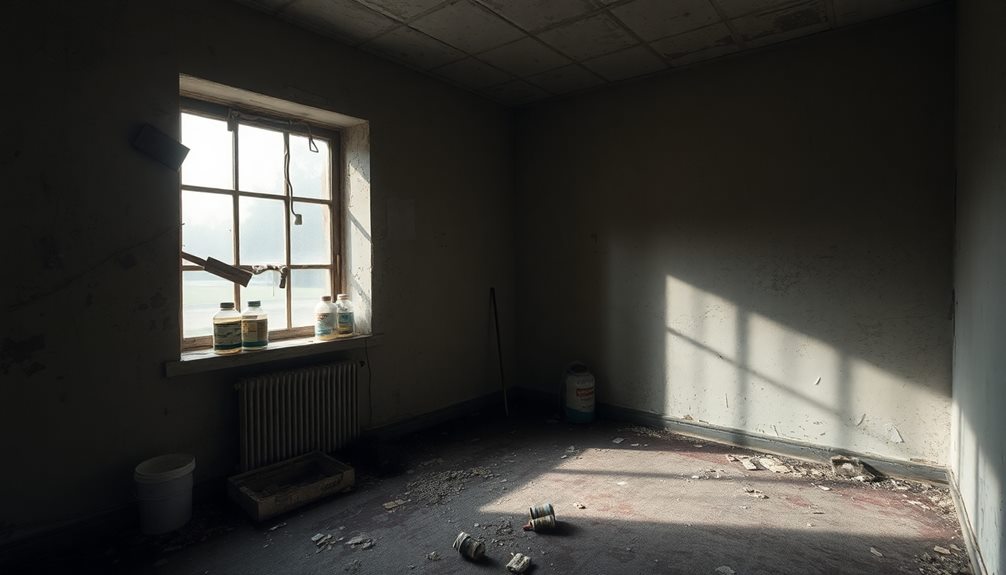Burberry Hero has a fresh and warm smell, perfect for anyone wanting to feel confident. It opens with bright bergamot and aromatic pine needle, giving you a refreshing start. Then, you'll notice warm benzoin and fiery incense in the heart, adding a cozy depth. The base is all about cedarwood oils, creating a masculine, woody finish. This combination feels unique yet familiar, making it great for everyday wear, whether you're at brunch or heading to the office. It's a scent that encourages strength and self-discovery, so stick around to learn more about its captivating notes!
Key Takeaways
- Burberry Hero opens with fresh bergamot, aromatic pine needle, and spicy black pepper for an invigorating start.
- The heart features warm benzoin and fiery incense, adding depth and coziness to the fragrance.
- A woody base of Atlas, Virginian, and Himalayan cedarwood oils creates a strong masculine foundation.
- The scent offers a sweet, woody, and slightly spicy aroma, making it unique yet familiar.
- Burberry Hero is versatile, suitable for daily wear across various occasions, including casual and office environments.
Introduction
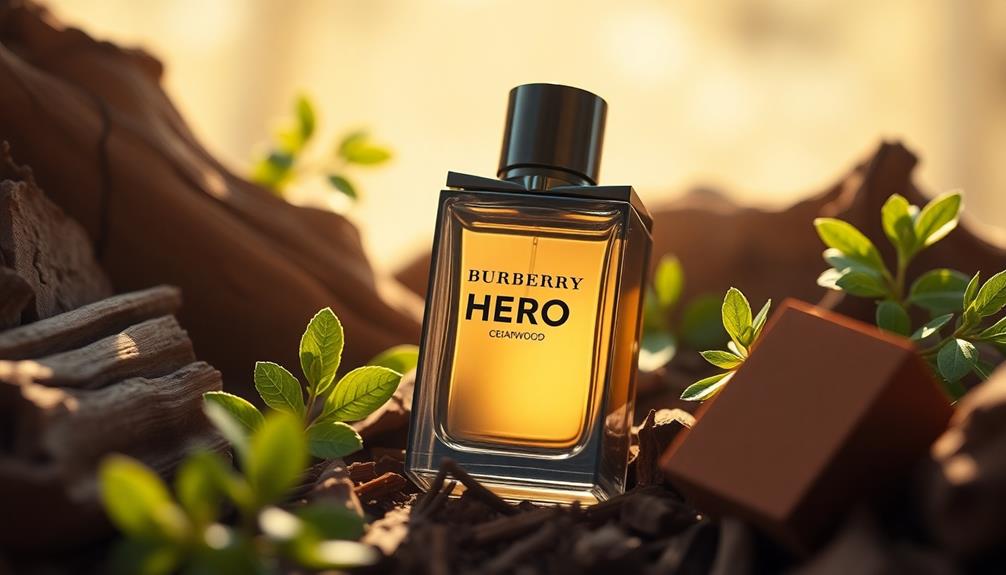
Introducing Burberry Hero, a fragrance that captures the essence of modern masculinity with its unique blend of fresh and warm notes. This scent stands out with its woody and spicy character, making it perfect for daily wear.
When you first spray Burberry Hero, you'll notice a burst of bergamot and aromatic pine needle, which gives it a refreshing opening. It's like a brisk walk through a pine forest on a sunny day.
As the fragrance develops, the heart reveals warm benzoin and fiery incense, adding depth and richness. This combination makes it not just a fragrance but a statement of style.
The base notes feature a trio of cedarwood oils, creating a comforting and masculine foundation that lingers throughout the day.
Burberry Hero is multidimensional, balancing sweet and smoky elements beautifully. It evolves over time, transitioning into a warm, powdery dry down that feels cozy and inviting.
Whether you're heading to work or out for a special occasion, this fragrance adapts to your environment, ensuring you always feel confident and refined.
Discover the essence of modern masculinity with every spritz of Burberry Hero!
Description of the Smell
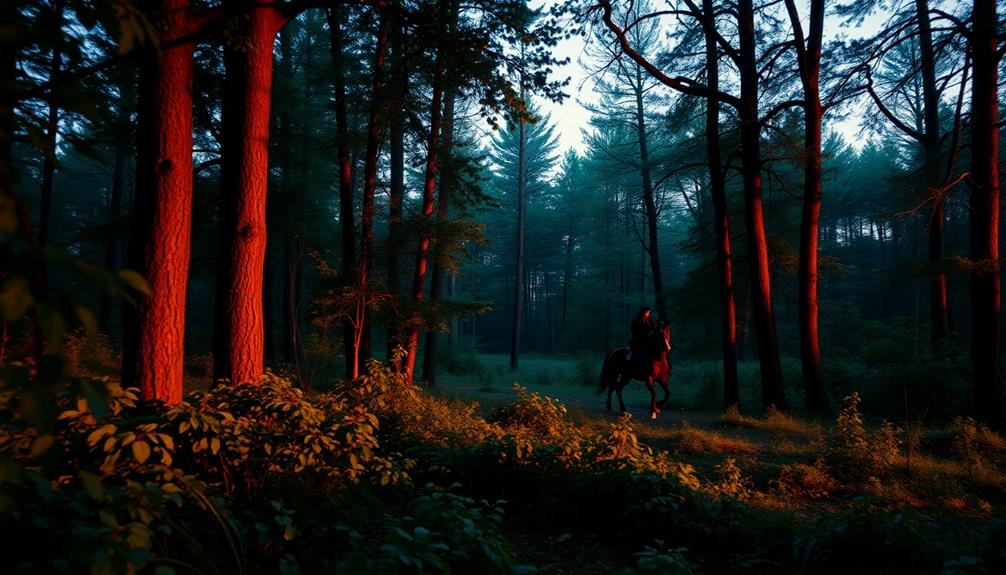
Burberry Hero's smell opens with a burst of fresh bergamot, aromatic pine needle, and a hint of spicy black pepper, instantly invigorating your senses.
You'll notice how this bright introduction sets the stage for a truly captivating experience. As you explore further, the heart of the fragrance reveals warm benzoin and fiery incense, adding a rich, smoky depth that feels cozy and inviting.
But it's the base notes that truly define this masculine fragrance. The trio of cedarwood oils creates a woody spicy foundation, offering comfort and grounding to the overall scent.
You might find that Hero gives off a sweet, woody, and slightly spicy aroma, which makes it feel unique yet familiar.
This fresh, bold, and multidimensional scent is perfect for daily wear, suitable for various occasions.
Whether you're heading to work or a casual outing, Burberry Hero fits right in. It's designed to make you feel confident and vibrant.
Source and Composition
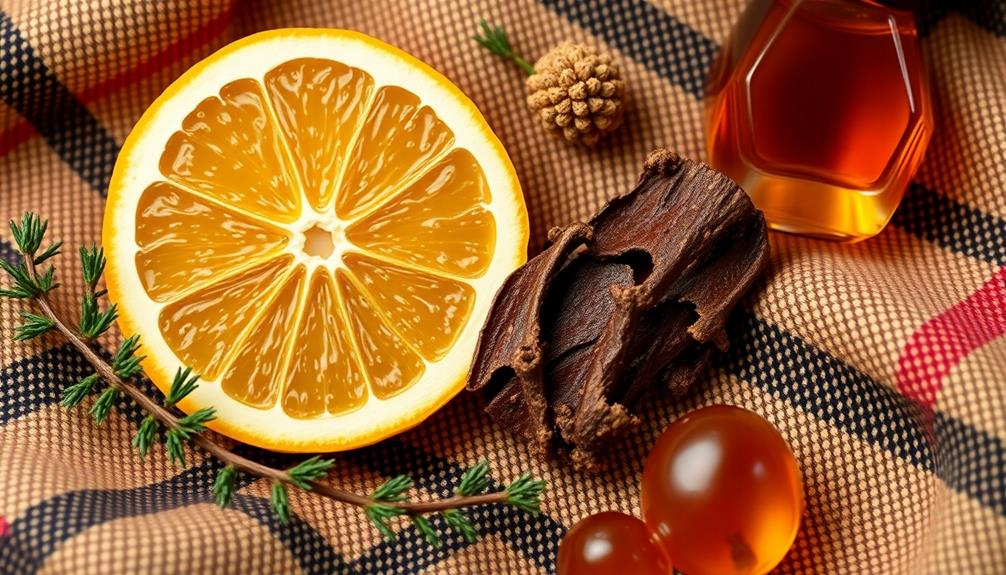
When exploring the source and composition of Burberry Hero, you'll find a carefully crafted blend that highlights its woody and fresh spicy elements. This Eau de Parfum offers a unique fragrance profile, starting with bright bergamot as the top note.
As you experience the scent, you'll notice the exciting middle notes of juniper and black pepper, adding a fresh and spicy kick.
The base is built around rich cedarwood oils, which bring a warm feeling reminiscent of a cozy forest. This composition includes a mix of Atlas, Virginian, and Himalayan cedar, creating a fresh cedar forest vibe that feels invigorating.
To enrich the fragrance further, Burberry Hero incorporates warm elements like incense and benzoin, enhancing its complexity and luxurious feel. These warm notes harmonize perfectly with the fresh, woody tones, creating a balanced composition that’s both bold and inviting. Fans of the house might note similarities in sophistication when compared to past releases, as pointed out in the positive burberry brit fragrance review that lauded its refined scent profile. Together, these elements design a fragrance that is distinctly modern yet timeless, making Burberry Hero a versatile addition to any collection.
Overall, this masculine scent is versatile, making it suitable for various occasions. You'll love how it evokes a fresh yet warm and slightly sweet profile.
Whether you're heading out for a casual day or a special event, Burberry Hero is designed to impress and uplift your spirit.
Typical Scenarios or Environments

Whether you're heading to a casual brunch with friends or a laid-back day at school, Burberry Hero fits seamlessly into your daily routine. This Eau de Toilette offers a masculine smell that's perfect for daily wear in casual settings.
Its woody and fresh spicy scent profile makes it refreshing, especially with top notes of bergamot and juniper, which are great for warm weather outings. Imagine wearing it while hanging out with friends or during a relaxed study session.
You'll feel confident and fresh without being too overpowering. The fragrance's versatility means it can also accompany you to the office, where its clean and approachable scent won't offend anyone.
As the day transitions to evening, Burberry Hero shines during informal gatherings or even a night out clubbing. Its warm, sweet undertones and cedarwood base ensure you'll leave a lasting impression.
You can easily switch from a business meeting to a fun night without needing a change. Overall, Burberry Hero is a go-to choice for almost any scenario, making it a fantastic addition to your collection for all occasions.
Emotional or Cultural Associations

The emotional and cultural associations tied to Burberry Hero enhance its appeal, connecting with those who seek a sense of freedom and adventure. When you wear this fragrance, it evokes feelings of strength and self-discovery, aligning perfectly with modern masculinity.
The warm notes of cedarwood and benzoin create a comforting experience that feels both bold and elegant.
Burberry Hero's advertising campaign challenges traditional stereotypes of masculinity. It uses powerful visuals and the symbolism of a horse to represent not just physical strength, but inner courage too.
This fragrance speaks to a diverse audience, promoting a universal idea of heroism that transcends gender boundaries.
Health or Safety Considerations
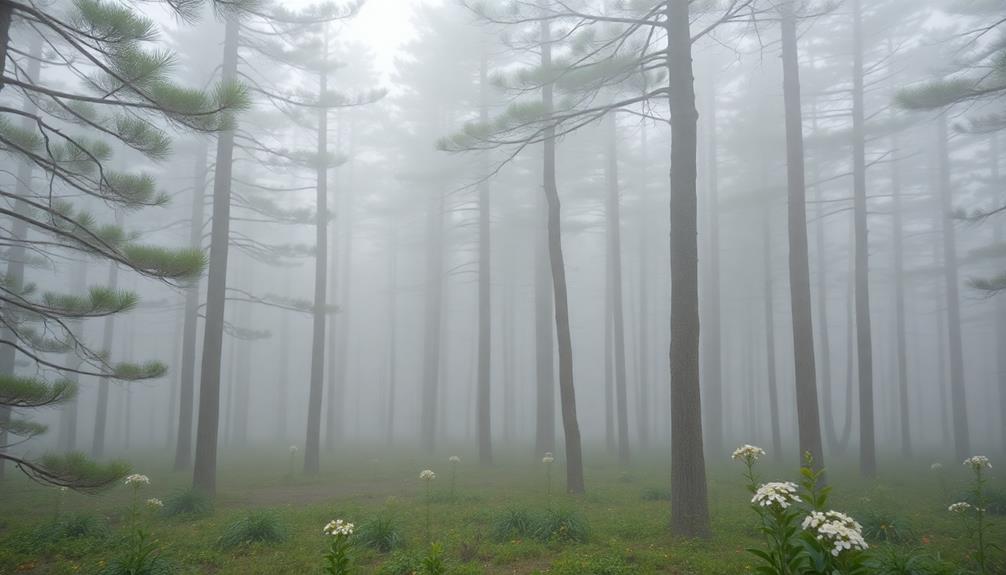
Health and safety considerations are crucial when using any fragrance, including Burberry Hero. This fragrance is made with natural ingredients like cedarwood oils, amyris, and cypriol oil, which are generally safe for skin application. However, it's always smart to be cautious.
If you have sensitive skin, performing a patch test is a must. Just apply a small amount on your wrist and wait 24 hours to see if any allergic reactions occur.
Also, remember to avoid contact with your eyes; fragrances can be irritating. For safety during use, store your Burberry Hero in a cool, dry place. This helps maintain its quality and effectiveness.
If you're pregnant or breastfeeding, it's wise to consult with a healthcare professional before using any fragrance. Your body may react differently to scent compounds during this time.
Final Thoughts

Burberry Hero stands out as a versatile fragrance that combines freshness with boldness, making it a great choice for various occasions.
When you wear it, you first notice the aromatic pine needle and fresh bergamot, which create an invigorating opening. As the scent develops, you'll find warm benzoin and fiery incense at its heart, adding a touch of spice and warmth.
The base notes feature a trio of cedarwood oils, giving the fragrance a classic masculine finish that feels rich and inviting.
What makes Burberry Hero even more appealing is its longevity. Many users report that it lasts between 4 to 8 hours, with some experiencing up to 10 hours, depending on their skin chemistry and the environment.
This means you can wear it confidently throughout your day, whether you're at work, out with friends, or enjoying a special event.
Frequently Asked Questions
Who Wears the Burberry Hero?
You'd wear Burberry Hero if you're a modern man seeking a classic, versatile scent. It's perfect for any occasion, appealing to those who appreciate fresh, woody aromas, and even resonates with some unisex preferences.
Is Burberry Hero a Good Summer Fragrance?
Yes, Burberry Hero's fresh and woody notes make it a great summer fragrance. You'll enjoy its invigorating scent, perfect for daily wear, casual outings, and it easily transitions from day to evening activities.
What Season Is Best for Burberry Hero?
Burberry Hero shines best in spring and fall. You'll appreciate its fresh, woody notes during milder temperatures. Its versatility makes it perfect for casual outings and office settings in these pleasant seasons.
Is Burberry Hero a Man or Woman?
You'll find Burberry Hero primarily marketed towards men, but its scent profile appeals to everyone. It's crafted for modern masculinity while inviting exploration, so don't hesitate to try it, regardless of your gender.
